 Facebook
Facebook
 X
X
 Instagram
Instagram
 TikTok
TikTok
 Youtube
Youtube
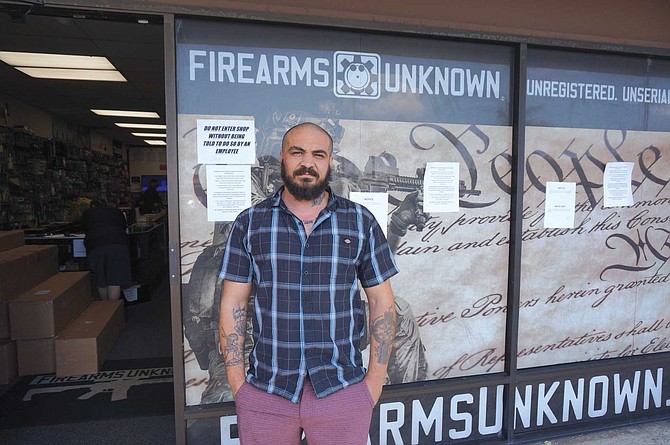
I don’t recall when I first heard the word “prepper,” but it was definitely derogatory, perhaps a step above — but certainly related to — “hoarder.” A prepper, as I understood it then, was someone preparing for the end of the world, like in the early ’60s, when bomb shelters came into vogue along with theories about Martians living among us.
It was a mere two years ago that I encountered my first modern-day prepper. He arrived at my door in the form of my neighbor, wearing camouflaged pants, combat boots, and a backpack he called his “bug out bag.” He was ex-military and requested the use of my swimming pool for an experiment he wanted to run. Once I agreed, I accompanied him to the pool, where he laid down his pack, removed his boots, and leaped into the deep end. Next, he unhitched his pants, tied the pant legs in knots and scooped air into them to make a float. Between gasps, he explained that he was preparing for the possibility of being lost at sea.
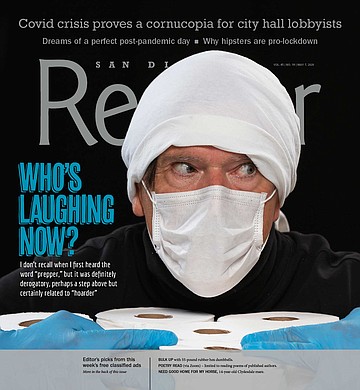
After drying off, he revealed the articles in his bug out bag to me. Among other things, there was a whetstone, flint, stick matches, duct tape, three sharp knives, a hand-crank radio, a water purifier, a thin plastic tarp, and a few rolls of quarters.
Once my neighbor left, I told my wife that his were the ravings of a combat victim in need of treatment for post-traumatic stress. Then I ran out and bought a case of pinto beans, five gallons of water, and a 49-function Swiss Army Knife. To justify the knife’s purchase, I told myself I needed it for camping trips with the grandkids. But the device sat buried in my desk drawer.
When the news announced a virus threatening our country, my thoughts on the matter were immediately divided. One part of me believed what I was told by the news, while another part flashed a newsreel of memories featuring SARS and Ebola, pandemics that probably took out fewer Americans than lightning strikes. Or so I half-reasoned while purchasing the last remaining pair of rubber gloves and a hospital mask. When nobody was looking, I took out my knife, oiled and sharpened the blades, and placed it in what can only be described as a bug out bag. And there, two months later, the knife sits, unused, patiently awaiting disaster along with two boxes of stick matches, half a dozen candles, packets of dehydrated food, a hand-crank radio, and a water purifier. I hesitate to name myself a prepper, but I must admit these preparations help me sleep at night.
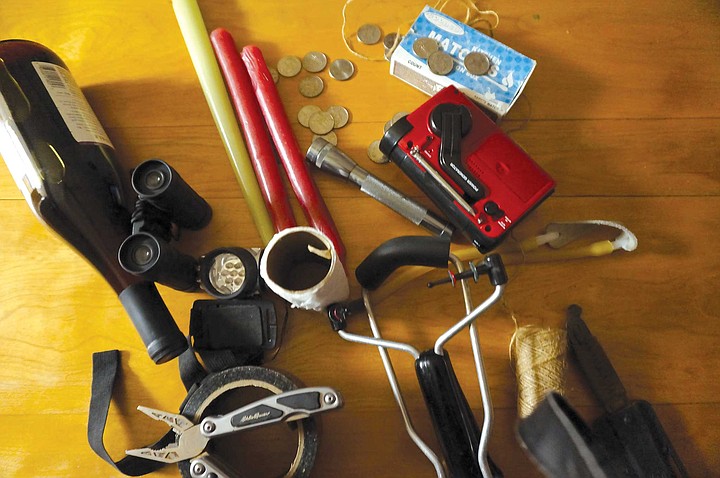
When I went looking for my prepper neighbor, I found he had bugged out to a bunker in Arizona. Did he have room for me if “it all came down,” as he warned it someday would? Were these the times he had warned of? I wondered while contemplating the thin line between paranoia and preparedness. Had I crossed that line?
Defining a prepper is difficult because there are as many types of prepper as there are disasters to prepared for. Some of the most common are earthquake preppers, bug out preppers, stay at home preppers, and doomsday preppers.
Some make the case that preppers existed long before there was a name for them. Anyone alive before or during the Great Depression behaved as preppers do in our day — if not before they stood in a soup line, then surely afterward. They came of age when self-reliance was common and government served as a sometimes necessary safety net when the crops failed. Your grandparents may not have been paranoid, but they realized that even a prosperous country could turn downward in the time it takes for a drought to hit.
Preparedness seems to have first gone into disfavor during the cold war era, when granny’s root cellar was converted to a fallout shelter. Once the big one failed to launch, shelter builders were branded as weirdos, and the world was split into two unequal camps: the majority of the population trusted the doctor, the news, and government agencies to be truthful and protect them against everything less potent than death. The other camp figured the best defense against hardship lay at the end of their arms. The most extreme among their emotional descendants are what we now call...
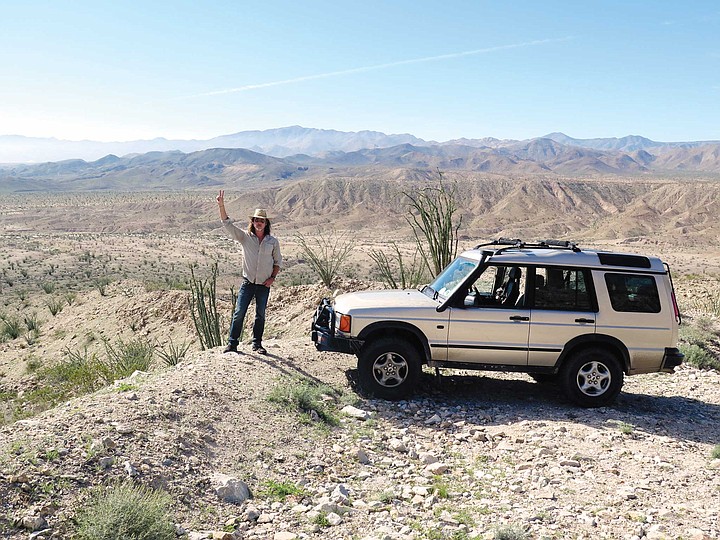
Doomsday Preppers
“They laughed at Noah until it started raining.” — Prepper proverb
After a mass catastrophic event, the earth may be repopulated by politicians who took shelter beneath the capitol, cockroaches, and doomsday preppers. While it seems unlikely that even the most prepared would survive something like a nuclear war, a crippling international emergency of less force would likely reshuffle society’s deck. If that happens, knowing which wild berries to eat and which ones will kill you will be far more important than what shade of green to paint your toenails. Your favorite rock star will be worth no more than the price of his leather pants, and the science nerd able grow anything edible will become the new sexy.
Jimmy Jack (not his real name) is not a science nerd, and while I have not spoken to him directly or been on his property, other preppers gave a clear look into his personality while keeping his location secret. They describe him as slight of build, in his mid-60s, and, except for the weather lines on his face, able to pass for someone two decades younger. Like most doomsday preppers, Jimmy lives in an undisclosed location, which in his case means somewhere 40-some miles east of downtown San Diego in the recesses of the Cleveland National Forest. His bunker is clean, comfortable, and constructed almost entirely of rebar-reinforced concrete. They say he has enough guns and ammunition to conquer a tiny country, a deep well he dug himself, a solar generator he built from scratch and scraps, several sets of military-grade binoculars, some night vision goggles, and a rugged off-road vehicle that, by their description, Batman would envy.
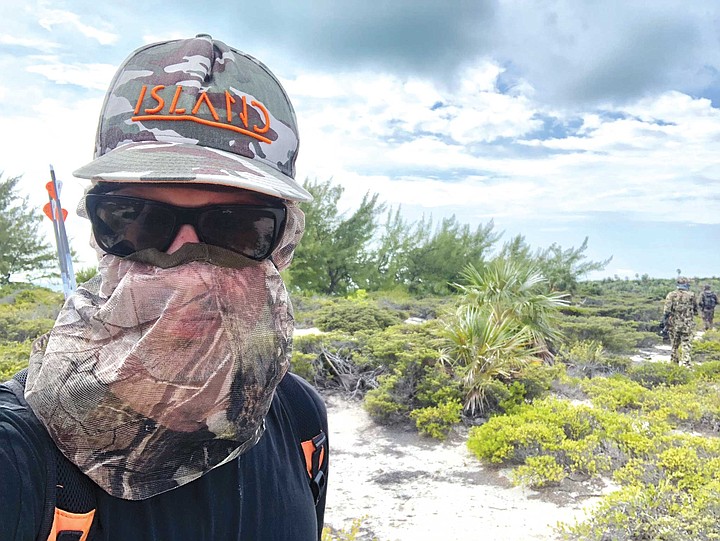
Mr. Jack occupies the property with his wife and two homeschooled pre-teen daughters. Everyone in the family knows how to grow, trap, or shoot their own food with a rifle or a bow. Apparently, the girls, 9 and 12, are basically typical teenagers in some ways — with desires for cool clothes, play dates, and iPhones. While this puts them at odds with their parents, the family is united in its two main goals—survival and being left alone. To that end, the Jack home is camouflaged to appear like just another moldy old trailer set back from a country road. Apparently, Jimmy himself is ex-military, and his wife and children are all crack shots. The family’s greatest communal fear is that the government will one day overstep its bounds and force them into what Jimmy terms “societal slavery,” something he believes is already happening as “the masses exist in lock-step with the CIA-controlled entertainment industry.” I am told he ends nearly every sentence with the words, “Better to die on your feet than live on your knees.”
Who’s laughing now?
“I am preparing for a worldwide pandemic; those who are prepared will survive. Those who are not will die.” These are the words of Donna Nash, recorded before February 28, 2012, when she starred on the National Geographic channel’s Doomsday Preppers. Seems prophetic now, but eight years ago, it sounded close to the fringe. As the current pandemic continues, masks and gloves are commonplace everywhere, but at the time of the Nat Geo filming, when she and her family wore such garb, they looked mighty strange.
Bil Zelman is an urban dweller and one of the nation’s top photographers. On video projects, he often collaborates with top-level filmmaker Jeycob Carlson. Zelman and Carlson work in a non-essential industry, and by their own admission are minor-league preppers. Zelman is what I would describe as passionate and peaceful by nature. He leans liberal politically, and so is an unlikely gun owner and hunter. Still, he uses a high-powered hunting rifle to take down his share of meat, elk being his most recent successful target. According to Zelman, “I’m a prepper, but so is anyone with a 401K. I’m not a doomsday prepper, because I don’t think it’s necessary or even possible to prepare for everything that could happen. To me, it only makes sense, however, to have extra water, gasoline, and some cash on hand in case of emergency.” Zelman keeps 50 pounds of dried beans, a water purifier, and 30 gallons of gasoline at the ready.
Bil and his wife Megan keep their Land Rover packed with provisions for the good life, something they enjoyed for a month of what could be described as a prepper vacation on the Colorado River after the coronavirus was announced.
Jeycob Carlson tends more toward the a libertarian-leaning side of the political spectrum and is probably a more serious, albeit less prepared prepper than Zelman. According to Carlson, “I keep thinking about building a bunker, storing a year’s worth of food and having a bunch of guns and ammunition, but I have four kids and all these items keep getting moved further and further down the list.” Still, like Zelman, Carlson is better prepared than most, with a few months’ worth of food for his young family to devour, just in case.
Lethal weapons0
“They can have my gun when they take it from my cold, dead hand.” — Popular 1980s bumper sticker.
It seems that few true preppers live without some sort of firearm. I recently visited Oceanside’s Firearms Unknown, where I handled a 9-millimeter and a .22 pistol. I was leaning toward the .22, since it seemed less threatening than the 9-millimeter. But according to Unknown’s media manager, Demetrius Karras, “For home protection, the nine-millimeter is a better choice.” He didn’t say so, but it was implied that a complete novice like me would not be very accurate and that the 9-millimeter would help compensate for my assumed bad aim. As I cuddled the pistol once again, the words of pacifist John Lennon’s song “Happiness is a Warm Gun” rang true in my ears. The gun provided a certain amount of comfort, and therefore happiness. I nonetheless resisted its pull and returned it to the case it came in.
Karras has the no-nonsense demeanor of someone who witnessed combat and served in the military for eight years. He is also one of the least paranoid people I have encountered during these days of plague. Almost as if to prove the point, he is one of the few I saw in public in mid-April without a particle mask or latex gloves.
Firearms Unknown sells guns and accessories at prices ranging from a few hundred bucks to over a thousand. The customers in the store at this moment range from a young man with the appearance of a father of two kids in little league to a camo-attired Marine inquiring about part-time employment. All sales personnel are friendly and knowledgeable as they wait on the sometimes anxious customers. A dozen or so rectangular cardboard boxes line the floor, indicating a new shipment has just arrived. Karras sees everyone from doomsday preppers to people who want to protect their families from a possible home invasion. The largest uptick in business is not from doomsdayers, but from those wanting to ensure nobody messes with the fam. He realizes he does encounter his share of doomsday preppers but realizes that they are hesitant to identify themselves as such. Most people who enter the store, according to Karras, are “looking for something for the immediate situation and are not stockpiling weapons.” Perhaps ironically, I feel more secure in this gun store than I do on the street.
Another popular ’80s bumper sticker read, “Guns don’t kill people, people kill people.” Almost as if reinforcing that thought, Karras tells me of a knifing that occurred at his store a few weeks earlier.
Karras has seen live combat, but I have just met him and am uncomfortable quizzing him directly on how it feels to take a life. He rephrases my indirect question and puts it back on me, “How does it feel to kill someone? I’ve been shot at and I’ve shot people, but it never really bothered me.” Of course, I have to ask how he deals with the threat of the coronavirus. He replies, “After being shot at it doesn’t seem that threatening.”
Hoarder joke:
Q: Why did the hoarder buy so much toilet paper?
A: Because he’s full of shit.
Continuing, Karras adds, “As for as being a prepper, I’m prepared, but not overly. Having a shopping cart piled high with toilet paper seems a bit extreme to me, because I think a shortage of items causes panic and it all begins to compound upon itself. Whenever politicians discuss limiting arms sales, a lot of people, myself included, have the reaction of buying more firearms to be grandfathered in.”
In 2018, the U.S. experienced 14 weather-related disasters where damage exceeded over $1 billion. These disasters stretched across the country and included two cyclones, eight severe storms, two winter storms, drought, and wildfires. When a disaster strikes, it’s too late to think about what you should have packed to weather the storm, and before disaster strikes, it can be daunting to know what to include. All-inclusive kits are expensive and do not necessarily include items specific to you and your family.
The basics include:
What you need can vary greatly based on where you live, the type of disaster you expect, and your family unit. Here are some basic items that most people will need in a disaster:
In preparation, scan valuable documents and store them securely online so they can’t be ruined by a disaster. It may be helpful to have copies of key items like insurance cards, social security numbers, passwords, and insurance policies in your kit as well. Take short videos to catalog valuables such as vehicles, computers, furniture, and artwork, for insurance purposes.
Key documents include: wills, insurance policies, contracts, deeds, passports, social security cards, immunization records, bank account numbers, credit card account numbers and companies, family records including birth, marriage, and death certificates.
There is a balance between being prepared and alert and carrying on with our daily lives. Keep particle masks at the ready and wash your hands. Perhaps equally important, however, is to use this time wisely. Play games with those you are confined with, learn an instrument or a new language. Build a bug out bag for yourself and your family. It might just make all the difference should you need to go on an unplanned camping trip.


I don’t recall when I first heard the word “prepper,” but it was definitely derogatory, perhaps a step above — but certainly related to — “hoarder.” A prepper, as I understood it then, was someone preparing for the end of the world, like in the early ’60s, when bomb shelters came into vogue along with theories about Martians living among us.
It was a mere two years ago that I encountered my first modern-day prepper. He arrived at my door in the form of my neighbor, wearing camouflaged pants, combat boots, and a backpack he called his “bug out bag.” He was ex-military and requested the use of my swimming pool for an experiment he wanted to run. Once I agreed, I accompanied him to the pool, where he laid down his pack, removed his boots, and leaped into the deep end. Next, he unhitched his pants, tied the pant legs in knots and scooped air into them to make a float. Between gasps, he explained that he was preparing for the possibility of being lost at sea.

After drying off, he revealed the articles in his bug out bag to me. Among other things, there was a whetstone, flint, stick matches, duct tape, three sharp knives, a hand-crank radio, a water purifier, a thin plastic tarp, and a few rolls of quarters.
Once my neighbor left, I told my wife that his were the ravings of a combat victim in need of treatment for post-traumatic stress. Then I ran out and bought a case of pinto beans, five gallons of water, and a 49-function Swiss Army Knife. To justify the knife’s purchase, I told myself I needed it for camping trips with the grandkids. But the device sat buried in my desk drawer.
When the news announced a virus threatening our country, my thoughts on the matter were immediately divided. One part of me believed what I was told by the news, while another part flashed a newsreel of memories featuring SARS and Ebola, pandemics that probably took out fewer Americans than lightning strikes. Or so I half-reasoned while purchasing the last remaining pair of rubber gloves and a hospital mask. When nobody was looking, I took out my knife, oiled and sharpened the blades, and placed it in what can only be described as a bug out bag. And there, two months later, the knife sits, unused, patiently awaiting disaster along with two boxes of stick matches, half a dozen candles, packets of dehydrated food, a hand-crank radio, and a water purifier. I hesitate to name myself a prepper, but I must admit these preparations help me sleep at night.

When I went looking for my prepper neighbor, I found he had bugged out to a bunker in Arizona. Did he have room for me if “it all came down,” as he warned it someday would? Were these the times he had warned of? I wondered while contemplating the thin line between paranoia and preparedness. Had I crossed that line?
Defining a prepper is difficult because there are as many types of prepper as there are disasters to prepared for. Some of the most common are earthquake preppers, bug out preppers, stay at home preppers, and doomsday preppers.
Some make the case that preppers existed long before there was a name for them. Anyone alive before or during the Great Depression behaved as preppers do in our day — if not before they stood in a soup line, then surely afterward. They came of age when self-reliance was common and government served as a sometimes necessary safety net when the crops failed. Your grandparents may not have been paranoid, but they realized that even a prosperous country could turn downward in the time it takes for a drought to hit.
Preparedness seems to have first gone into disfavor during the cold war era, when granny’s root cellar was converted to a fallout shelter. Once the big one failed to launch, shelter builders were branded as weirdos, and the world was split into two unequal camps: the majority of the population trusted the doctor, the news, and government agencies to be truthful and protect them against everything less potent than death. The other camp figured the best defense against hardship lay at the end of their arms. The most extreme among their emotional descendants are what we now call...

Doomsday Preppers
“They laughed at Noah until it started raining.” — Prepper proverb
After a mass catastrophic event, the earth may be repopulated by politicians who took shelter beneath the capitol, cockroaches, and doomsday preppers. While it seems unlikely that even the most prepared would survive something like a nuclear war, a crippling international emergency of less force would likely reshuffle society’s deck. If that happens, knowing which wild berries to eat and which ones will kill you will be far more important than what shade of green to paint your toenails. Your favorite rock star will be worth no more than the price of his leather pants, and the science nerd able grow anything edible will become the new sexy.
Jimmy Jack (not his real name) is not a science nerd, and while I have not spoken to him directly or been on his property, other preppers gave a clear look into his personality while keeping his location secret. They describe him as slight of build, in his mid-60s, and, except for the weather lines on his face, able to pass for someone two decades younger. Like most doomsday preppers, Jimmy lives in an undisclosed location, which in his case means somewhere 40-some miles east of downtown San Diego in the recesses of the Cleveland National Forest. His bunker is clean, comfortable, and constructed almost entirely of rebar-reinforced concrete. They say he has enough guns and ammunition to conquer a tiny country, a deep well he dug himself, a solar generator he built from scratch and scraps, several sets of military-grade binoculars, some night vision goggles, and a rugged off-road vehicle that, by their description, Batman would envy.

Mr. Jack occupies the property with his wife and two homeschooled pre-teen daughters. Everyone in the family knows how to grow, trap, or shoot their own food with a rifle or a bow. Apparently, the girls, 9 and 12, are basically typical teenagers in some ways — with desires for cool clothes, play dates, and iPhones. While this puts them at odds with their parents, the family is united in its two main goals—survival and being left alone. To that end, the Jack home is camouflaged to appear like just another moldy old trailer set back from a country road. Apparently, Jimmy himself is ex-military, and his wife and children are all crack shots. The family’s greatest communal fear is that the government will one day overstep its bounds and force them into what Jimmy terms “societal slavery,” something he believes is already happening as “the masses exist in lock-step with the CIA-controlled entertainment industry.” I am told he ends nearly every sentence with the words, “Better to die on your feet than live on your knees.”
Who’s laughing now?
“I am preparing for a worldwide pandemic; those who are prepared will survive. Those who are not will die.” These are the words of Donna Nash, recorded before February 28, 2012, when she starred on the National Geographic channel’s Doomsday Preppers. Seems prophetic now, but eight years ago, it sounded close to the fringe. As the current pandemic continues, masks and gloves are commonplace everywhere, but at the time of the Nat Geo filming, when she and her family wore such garb, they looked mighty strange.
Bil Zelman is an urban dweller and one of the nation’s top photographers. On video projects, he often collaborates with top-level filmmaker Jeycob Carlson. Zelman and Carlson work in a non-essential industry, and by their own admission are minor-league preppers. Zelman is what I would describe as passionate and peaceful by nature. He leans liberal politically, and so is an unlikely gun owner and hunter. Still, he uses a high-powered hunting rifle to take down his share of meat, elk being his most recent successful target. According to Zelman, “I’m a prepper, but so is anyone with a 401K. I’m not a doomsday prepper, because I don’t think it’s necessary or even possible to prepare for everything that could happen. To me, it only makes sense, however, to have extra water, gasoline, and some cash on hand in case of emergency.” Zelman keeps 50 pounds of dried beans, a water purifier, and 30 gallons of gasoline at the ready.
Bil and his wife Megan keep their Land Rover packed with provisions for the good life, something they enjoyed for a month of what could be described as a prepper vacation on the Colorado River after the coronavirus was announced.
Jeycob Carlson tends more toward the a libertarian-leaning side of the political spectrum and is probably a more serious, albeit less prepared prepper than Zelman. According to Carlson, “I keep thinking about building a bunker, storing a year’s worth of food and having a bunch of guns and ammunition, but I have four kids and all these items keep getting moved further and further down the list.” Still, like Zelman, Carlson is better prepared than most, with a few months’ worth of food for his young family to devour, just in case.
Lethal weapons0
“They can have my gun when they take it from my cold, dead hand.” — Popular 1980s bumper sticker.
It seems that few true preppers live without some sort of firearm. I recently visited Oceanside’s Firearms Unknown, where I handled a 9-millimeter and a .22 pistol. I was leaning toward the .22, since it seemed less threatening than the 9-millimeter. But according to Unknown’s media manager, Demetrius Karras, “For home protection, the nine-millimeter is a better choice.” He didn’t say so, but it was implied that a complete novice like me would not be very accurate and that the 9-millimeter would help compensate for my assumed bad aim. As I cuddled the pistol once again, the words of pacifist John Lennon’s song “Happiness is a Warm Gun” rang true in my ears. The gun provided a certain amount of comfort, and therefore happiness. I nonetheless resisted its pull and returned it to the case it came in.
Karras has the no-nonsense demeanor of someone who witnessed combat and served in the military for eight years. He is also one of the least paranoid people I have encountered during these days of plague. Almost as if to prove the point, he is one of the few I saw in public in mid-April without a particle mask or latex gloves.
Firearms Unknown sells guns and accessories at prices ranging from a few hundred bucks to over a thousand. The customers in the store at this moment range from a young man with the appearance of a father of two kids in little league to a camo-attired Marine inquiring about part-time employment. All sales personnel are friendly and knowledgeable as they wait on the sometimes anxious customers. A dozen or so rectangular cardboard boxes line the floor, indicating a new shipment has just arrived. Karras sees everyone from doomsday preppers to people who want to protect their families from a possible home invasion. The largest uptick in business is not from doomsdayers, but from those wanting to ensure nobody messes with the fam. He realizes he does encounter his share of doomsday preppers but realizes that they are hesitant to identify themselves as such. Most people who enter the store, according to Karras, are “looking for something for the immediate situation and are not stockpiling weapons.” Perhaps ironically, I feel more secure in this gun store than I do on the street.
Another popular ’80s bumper sticker read, “Guns don’t kill people, people kill people.” Almost as if reinforcing that thought, Karras tells me of a knifing that occurred at his store a few weeks earlier.
Karras has seen live combat, but I have just met him and am uncomfortable quizzing him directly on how it feels to take a life. He rephrases my indirect question and puts it back on me, “How does it feel to kill someone? I’ve been shot at and I’ve shot people, but it never really bothered me.” Of course, I have to ask how he deals with the threat of the coronavirus. He replies, “After being shot at it doesn’t seem that threatening.”
Hoarder joke:
Q: Why did the hoarder buy so much toilet paper?
A: Because he’s full of shit.
Continuing, Karras adds, “As for as being a prepper, I’m prepared, but not overly. Having a shopping cart piled high with toilet paper seems a bit extreme to me, because I think a shortage of items causes panic and it all begins to compound upon itself. Whenever politicians discuss limiting arms sales, a lot of people, myself included, have the reaction of buying more firearms to be grandfathered in.”
In 2018, the U.S. experienced 14 weather-related disasters where damage exceeded over $1 billion. These disasters stretched across the country and included two cyclones, eight severe storms, two winter storms, drought, and wildfires. When a disaster strikes, it’s too late to think about what you should have packed to weather the storm, and before disaster strikes, it can be daunting to know what to include. All-inclusive kits are expensive and do not necessarily include items specific to you and your family.
The basics include:
What you need can vary greatly based on where you live, the type of disaster you expect, and your family unit. Here are some basic items that most people will need in a disaster:
In preparation, scan valuable documents and store them securely online so they can’t be ruined by a disaster. It may be helpful to have copies of key items like insurance cards, social security numbers, passwords, and insurance policies in your kit as well. Take short videos to catalog valuables such as vehicles, computers, furniture, and artwork, for insurance purposes.
Key documents include: wills, insurance policies, contracts, deeds, passports, social security cards, immunization records, bank account numbers, credit card account numbers and companies, family records including birth, marriage, and death certificates.
There is a balance between being prepared and alert and carrying on with our daily lives. Keep particle masks at the ready and wash your hands. Perhaps equally important, however, is to use this time wisely. Play games with those you are confined with, learn an instrument or a new language. Build a bug out bag for yourself and your family. It might just make all the difference should you need to go on an unplanned camping trip.
Comments